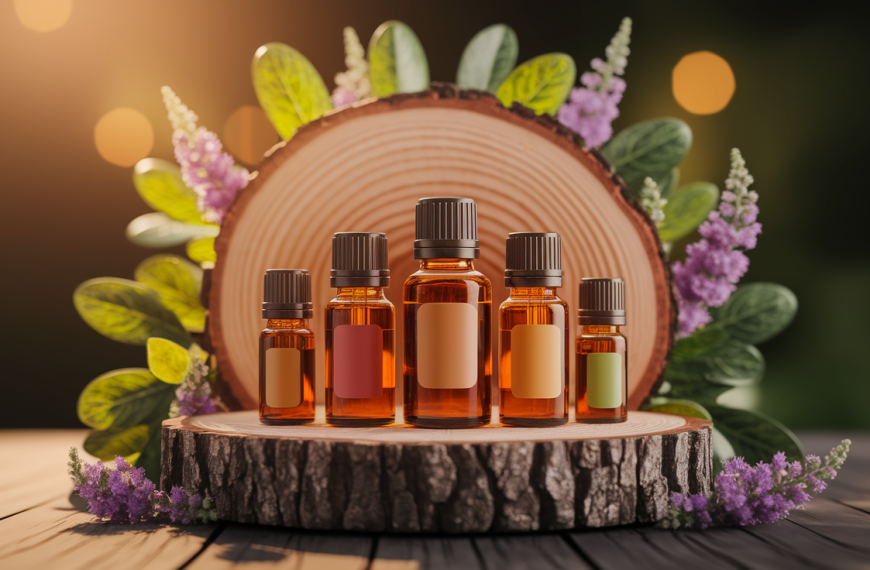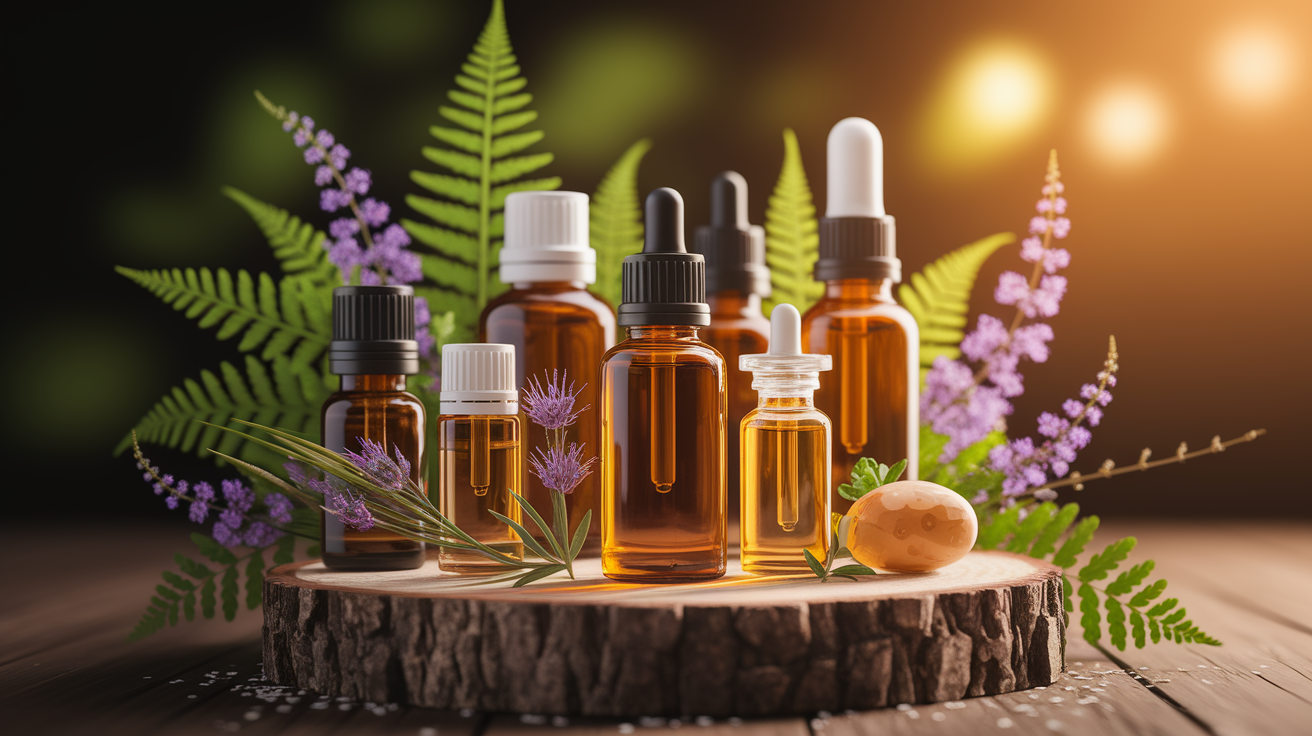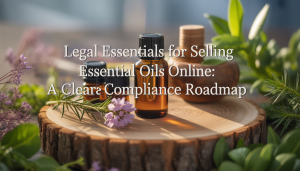A Burst of Cool: Aromatherapy for Hot Flashes
Those unexpected waves of heat that leave you flushed, sweaty, and reaching for the nearest fan aren’t just uncomfortable—they’re disruptive. Hot flashes rank among the most challenging menopause symptoms, striking without warning and leaving chaos in their wake. I’ve discovered that aromatherapy offers remarkable relief when traditional methods fall short.
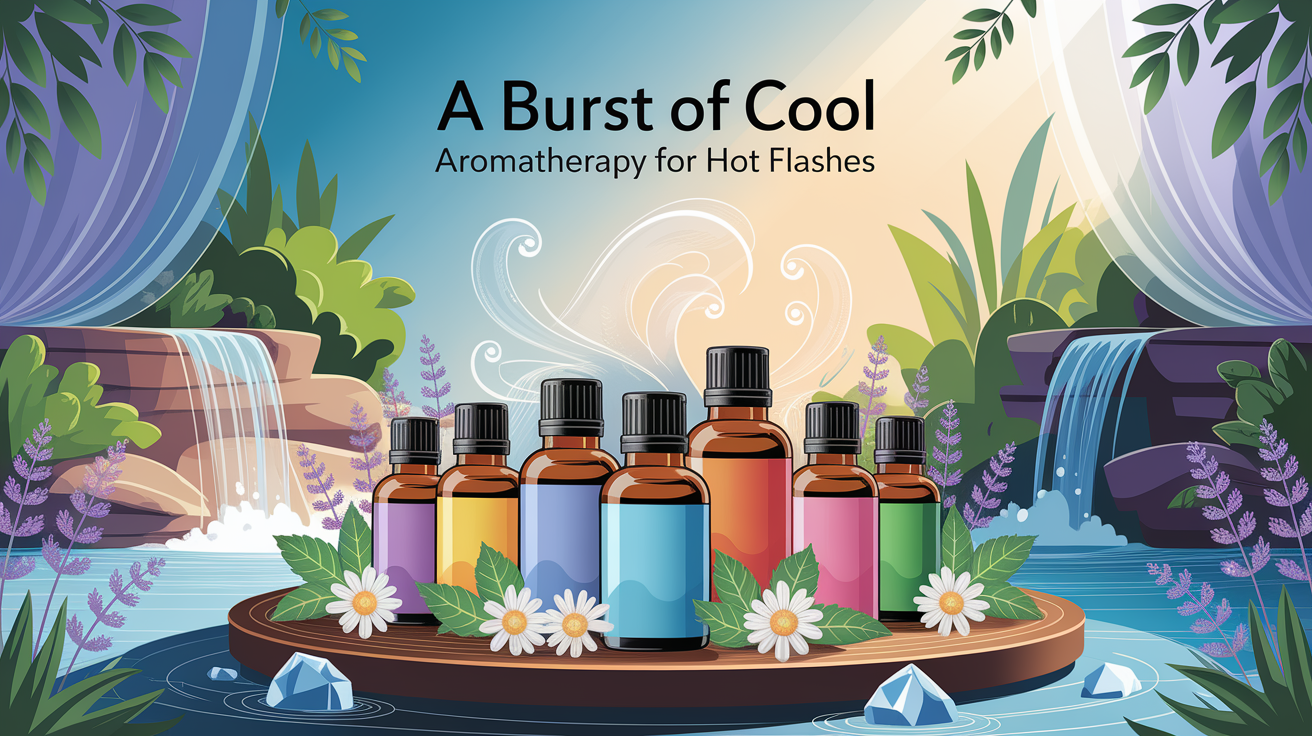
Essential oils work on multiple levels to address hot flashes—some provide an immediate cooling sensation when you need it most, while others work more subtly to balance hormonal imbalances over time. The volatile compounds in these plant extracts interact with our bodies in fascinating ways, influencing both our physical symptoms and emotional responses.
What makes aromatherapy particularly valuable for hot flash management is its dual-action approach. When you inhale certain essential oils, they can trigger neurological responses that help regulate body temperature while simultaneously calming the anxious feelings that often accompany or even trigger hot flashes. It’s like getting two therapies in one aromatic package.
Best Essential Oils to Cool Hot Flashes
Lavender Essential Oil
The crown jewel in my hot flash arsenal has to be lavender essential oil. A systematic review published in 2021 confirmed what I’ve observed for years—lavender significantly reduces hot flash intensity, especially when inhaled. The study highlighted its particular effectiveness when combined with low-dose neroli oil.
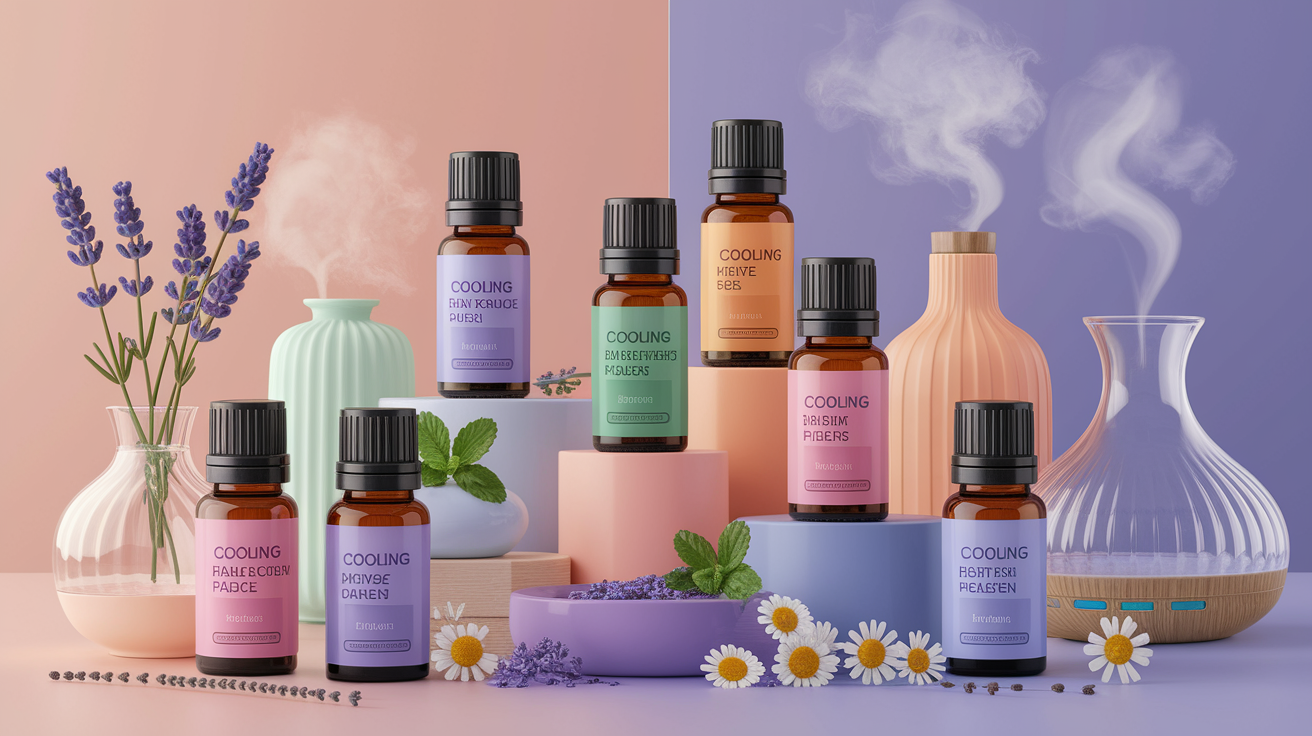
What makes lavender special is its remarkable ability to address both physical and emotional aspects of hot flashes. It cools the body while simultaneously calming the mind. Research has shown that lavender aromatherapy significantly reduces hot flash incidence and severity, while decreasing anxiety, depression, and other physical symptoms that often ride alongside menopause.
For best results, I’ve found that using a 2% dilution of lavender essential oil before bedtime helps prevent those frustrating night sweats that leave you changing pajamas at 2 AM.
Peppermint Essential Oil
Regarding immediate cooling relief, nothing works faster than peppermint essential oil. The menthol content creates that unmistakable cooling sensation right when you need it most. I keep a peppermint spray in my purse, car, and desk drawer—it’s been a lifesaver during unexpected hot flashes in professional settings.
What’s fascinating about peppermint oil is that it doesn’t just create a psychological cooling effect—it actually activates cold receptors in your skin, triggering a genuine physical cooling sensation. For how to use peppermint oil for menopause hot flashes, I recommend a quick spritz to the back of the neck and wrists at the first sign of warmth.
Clary Sage Essential Oil
There’s a reason clary sage has earned the nickname “women’s oil” in aromatherapy circles. This powerhouse contains natural phytoestrogens that help ease hormonal fluctuations during menopause. The clary sage essential oil benefits for night sweats are awe-inspiring—I’ve seen women reduce their nighttime hot flashes by more than half after incorporating this oil into their evening routine.
The earthy, herbaceous aroma might take some time, but the benefits make it worthwhile. Many women in my workshops report that clary sage provides the longest-lasting relief compared to other oils.
Geranium Essential Oil
Geranium essential oil deserves more recognition for its hot flash fighting abilities. It helps regulate hormonal activity and promotes circulation, creating a balancing effect on the body’s temperature regulation system. The rose-like scent is uplifting while its adaptogenic properties help your body respond more effectively to stress—a common hot flash trigger.
I find geranium works best when combined with other oils. My favorite synergistic blend pairs geranium with clary sage and a touch of lavender for comprehensive relief.
Roman Chamomile Essential Oil
For those disruptive nighttime hot flashes, Roman chamomile is my secret weapon. Its gentle, apple-like fragrance contains powerful relaxing properties that help prevent stress-induced hot flashes that typically strike during sleep. When comparing essential oils for menopause symptoms, Roman chamomile consistently ranks highest for improving sleep quality while reducing night sweats.
How to Apply Essential Oils for Maximum Relief
Diffusion Methods
Diffusing essential oils throughout your living space creates an environment that can help prevent hot flashes before they start. I recommend:
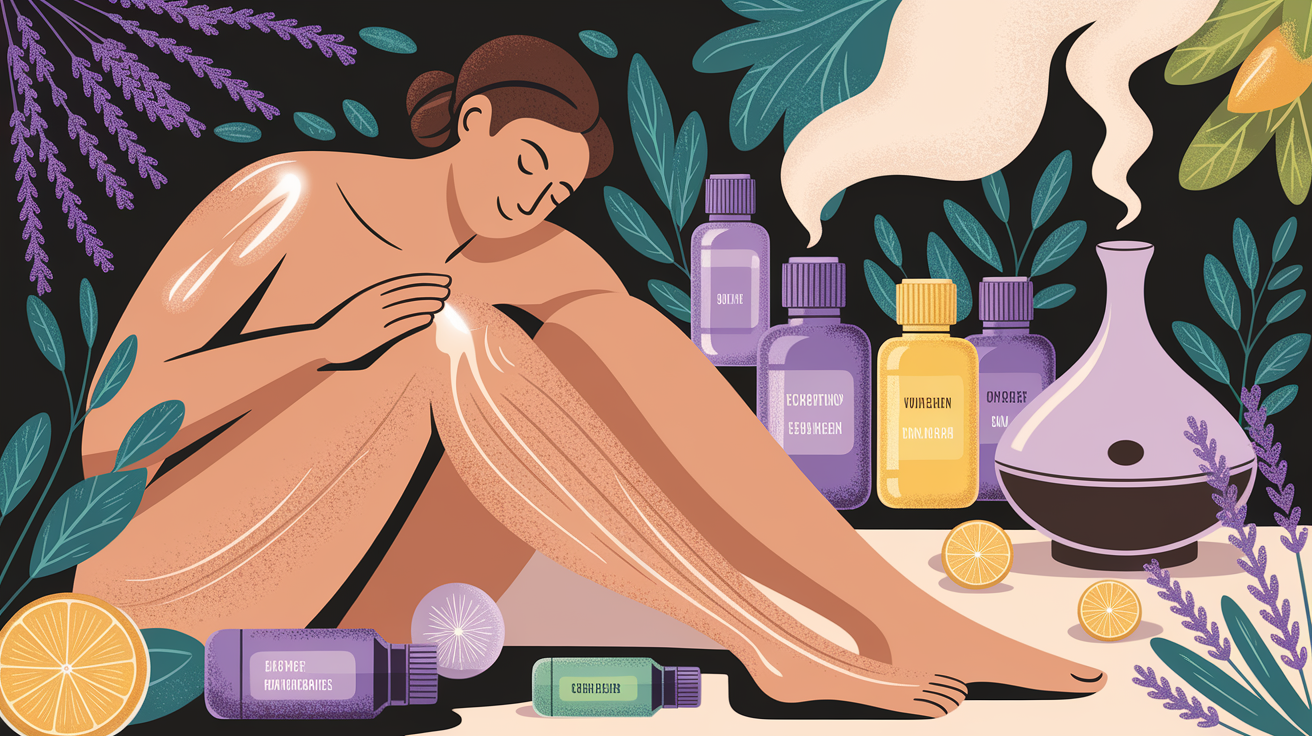
- Running an ultrasonic diffuser in your bedroom 30 minutes before sleep with 3 drops lavender and 2 drops clary sage
- Using a personal inhaler with peppermint oil for on-the-go relief
- Creating an evening diffuser blend with Roman chamomile and lavender to prevent night sweats
The subtle, consistent exposure through diffusion seems to have a cumulative effect in reducing hot flash frequency over time.
Topical Applications
For direct cooling relief, topical application with the proper carrier oil is incredibly effective:
Essential Oil Roller Blends for Hot Flash Relief
My go-to roller blend contains:
- 10 ml carrier oil (like fractionated coconut oil)
- 6 drops clary sage
- 4 drops lavender
- 2 drops peppermint (for immediate cooling)
Roll this blend onto pulse points—wrists, behind ears, and sides of the neck—at the first sign of a hot flash. The combination provides both immediate relief and longer-term balance.
Cooling Body Sprays
Essential oil recipes for cooling body sprays are surprisingly simple to make. Here’s how I make mine:
- Fill a 2oz glass spray bottle with distilled water
- Add 1 tablespoon of witch hazel as an emulsifier
- Add 10 drops peppermint, 6 drops lavender, and 4 drops geranium
- Shake well before each use
Keep this spray in your refrigerator for an extra cooling boost when you need it most.
Aromatic Bathing
One of the most effective natural ways to reduce hot flashes during menopause is through aromatic bathing. Before bed, add 4-5 drops of lavender and 2-3 drops of clary sage to a warm (not hot) bath. Mix the oils with a tablespoon of carrier oil first to help them disperse evenly in the water.
This practice helps prevent nighttime hot flashes and improves sleep quality—a welcome bonus during menopause when insomnia often compounds other symptoms.
Safety First: Precautions and Tips
While essential oils offer wonderful benefits for hot flash management, they are powerful plant compounds that deserve respect. The National Association for Holistic Aromatherapy (NAHA) provides excellent safety guidelines that I always follow and recommend.

Dilution Guidelines
Always dilute essential oils in a carrier oil before applying them to your skin. For hot flash relief, I recommend:
- A 2-3% dilution (12-18 drops per ounce of carrier oil) for body application
- A 1% dilution (6 drops per ounce of carrier oil) for facial applications or sensitive skin
- Never applying essential oils undiluted directly to the skin
Popular carrier oils include jojoba (which most closely resembles our skin’s natural sebum), fractionated coconut oil, and sweet almond oil.
Quality Considerations
Are essential oils safe for hot flashes? When properly chosen and used—absolutely! But quality matters tremendously. Companies like DoTERRA and Young Living have established rigorous quality control processes, though there are many excellent smaller producers as well.
Look for:
- GC/MS testing results (gas chromatography/mass spectrometry)
- Botanical names on bottles
- Country of origin information
- Appropriate pricing (extremely cheap oils are typically adulterated)
Oils to Approach with Caution
While many essential oils can help with hot flashes, some may actually worsen symptoms. Proceed carefully with:
- Cinnamon bark oil – can be heating
- Black pepper oil – may increase circulation and warmth
- Thyme oil – potentially stimulating
- Any oil that produces a “warming” sensation
Internal Use Cautions
Can I use essential oils internally for hot flashes? This is one of the most common questions I receive, and my answer is consistent: I don’t recommend internal use of essential oils for hot flashes unless under the guidance of a healthcare provider trained in aromatic medicine. Inhalation and topical application are typically safer and quite effective for this purpose.
Special Considerations
Do essential oils actually work for hot flashes? The research and my experience both say yes, but with these important considerations:
- Individual responses vary—what works wonderfully for one person might not work for another
- Consistency is key—occasional use won’t provide the same benefits as regular application
- Essential oils work best as part of a comprehensive approach to managing menopause symptoms
- Always consult your healthcare provider before using essential oils if you’re on hormone therapy
How often should you use essential oils for hot flashes? For most women, I recommend applying topical blends 2-3 times daily and consistent diffusion in living spaces.
Chill Out: Embrace Aromatic Comfort
Living with hot flashes doesn’t have to mean suffering through them. Essential oils’ cooling, calming power can transform your experience of this challenging menopause symptom. By creating your arsenal of aromatic tools—perhaps a peppermint spray for immediate relief, a lavender and clary sage roller for ongoing balance, and a bedtime Roman chamomile ritual—you can easily navigate hot flashes.
Remember that hot flashes, like menopause, represent a transition rather than a permanent state. The best essential oil blends for hot flashes might change as your body progresses through this transition, so remain open to adjusting your approach as needed.
What I love most about using essential oils for hot flash management is the element of self-care it introduces to what can otherwise feel like a frustrating experience. Rather than dreading the next wave of heat, you’re empowered with practical tools and pleasurable scents that transform the experience.
By embracing the cooling comfort of essential oils, you’re not just managing symptoms—you’re honoring your body’s journey through this significant life transition. And that might be the most potent medicine of all.








